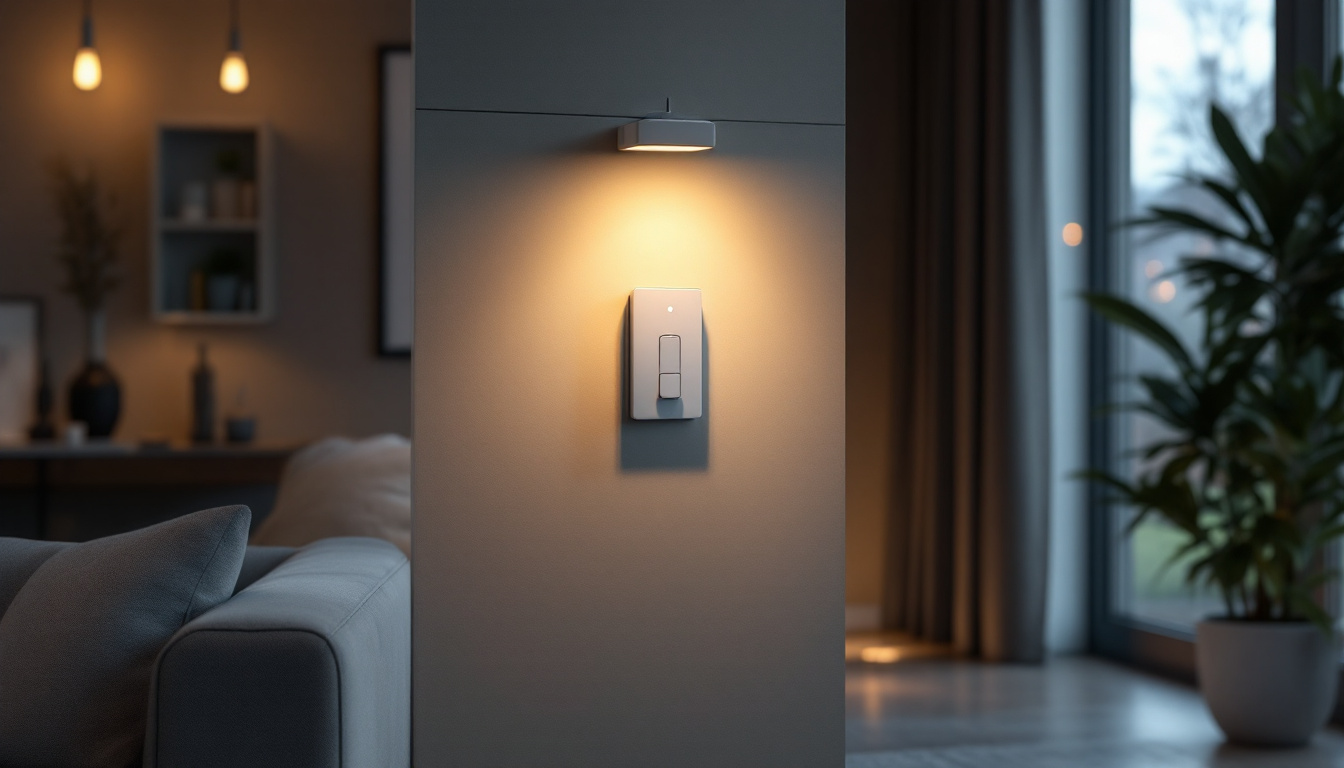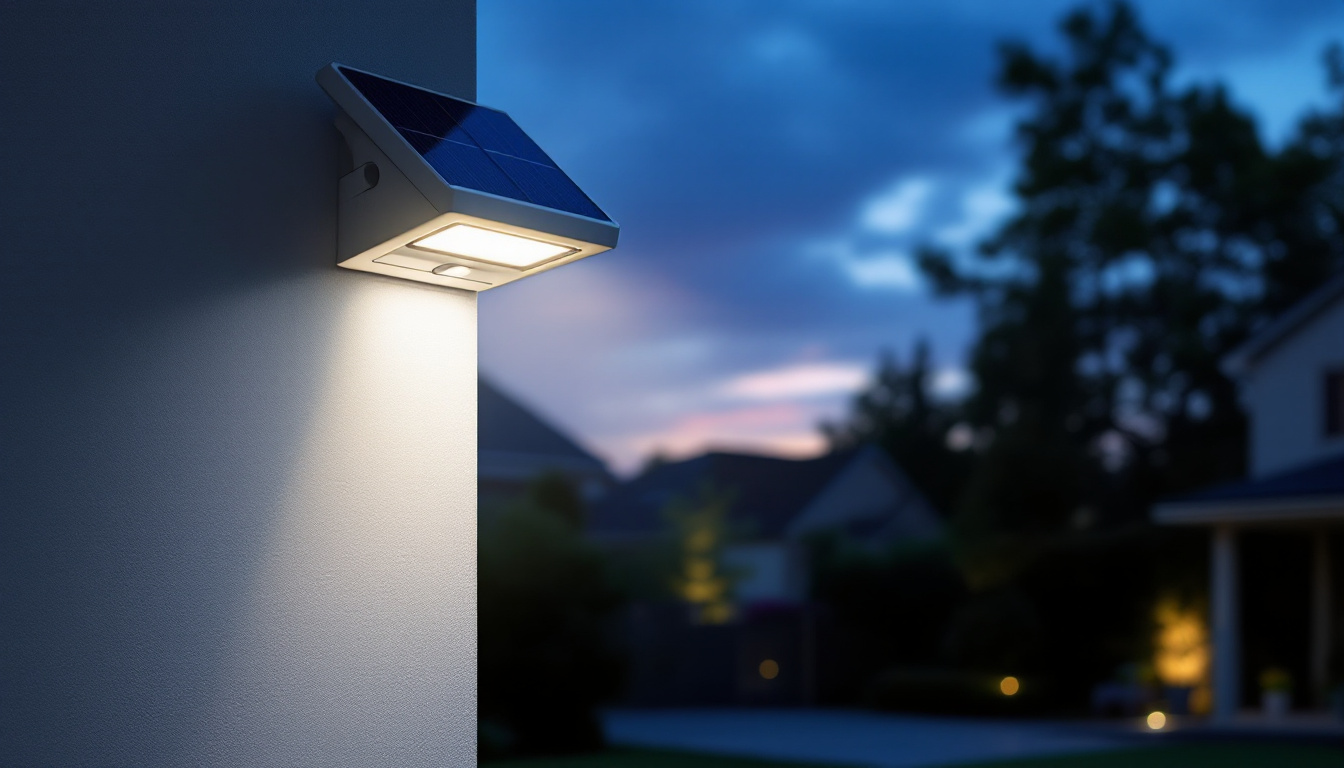
In the realm of modern lighting design, the integration of technology has paved the way for innovative solutions that enhance both functionality and aesthetics. Among these advancements, motion sensor light switches have emerged as a game-changer for indoor lighting. This article delves into the benefits, types, and installation considerations of motion sensor light switches, providing lighting contractors with valuable insights to elevate their projects.
Motion sensor light switches are not just a trend; they represent a significant evolution in how indoor spaces are illuminated. Their primary advantage lies in their ability to automatically turn lights on and off based on movement, which can lead to substantial energy savings and improved user experience.
One of the most compelling reasons to incorporate motion sensor light switches into lighting designs is energy efficiency. Traditional light switches require manual operation, often resulting in lights being left on unnecessarily. In contrast, motion sensors ensure that lights are only activated when needed, significantly reducing energy consumption.
This efficiency not only lowers electricity bills but also contributes to a more sustainable environment. For contractors, promoting energy-efficient solutions can enhance their reputation and appeal to eco-conscious clients. Additionally, many modern motion sensors are equipped with adjustable sensitivity settings and timers, allowing users to customize their lighting experience further. This adaptability ensures that lights are not only energy-efficient but also tailored to the specific needs of each space, optimizing both comfort and functionality.
Convenience is another key benefit of motion sensor light switches. In high-traffic areas such as hallways, bathrooms, and kitchens, the ability to have lights automatically turn on as someone enters the room eliminates the need to fumble for switches in the dark.
This feature is particularly beneficial for individuals with mobility challenges or those carrying items. By providing a seamless lighting experience, contractors can significantly improve the usability of indoor spaces. Furthermore, the integration of motion sensors with smart home technology allows for even greater convenience. Homeowners can control their lighting remotely or set schedules to ensure that lights are activated at specific times, enhancing the overall living experience and providing peace of mind when away from home.
Safety is paramount in any lighting design. Motion sensor light switches enhance security by ensuring that areas are well-lit when someone is present. This is especially important for entryways and staircases, where adequate lighting can prevent accidents.
Moreover, the presence of motion-activated lights can deter potential intruders, adding an extra layer of security to residential and commercial properties. As a contractor, emphasizing these safety benefits can resonate well with clients looking to protect their homes and businesses. Additionally, many motion sensor lights now come equipped with features such as adjustable brightness levels and the ability to integrate with security cameras, providing a comprehensive solution that not only lights up spaces but also monitors them. This dual functionality can be a significant selling point for clients who prioritize both safety and innovation in their lighting solutions.
Understanding the various types of motion sensor light switches is crucial for contractors aiming to meet diverse client needs. Each type comes with its own set of features and applications, allowing for tailored solutions in different settings.
Passive infrared sensors are the most common type of motion sensor used in indoor lighting. They detect body heat emitted by individuals within their range. When someone enters the sensor’s field, the lights are activated.
PIR sensors are ideal for areas with consistent foot traffic, such as hallways and restrooms. Their reliability and cost-effectiveness make them a popular choice among contractors. However, they may not be suitable for spaces with frequent temperature changes, as this can lead to false triggers. Additionally, the placement of PIR sensors is critical; they should be installed at an optimal height and angle to maximize their effectiveness. For instance, mounting them too high can reduce their sensitivity, while improper angles may miss detecting movement altogether.
Ultrasonic sensors operate by emitting high-frequency sound waves that bounce off objects in the room. When movement is detected, the sensor activates the lights. These sensors are particularly effective in larger spaces and can detect motion even behind obstacles.
For contractors, ultrasonic sensors offer versatility in installation, making them suitable for a variety of applications, including conference rooms and warehouses. However, they may be more expensive than PIR sensors, so it’s essential to consider the client’s budget and specific needs. Moreover, ultrasonic sensors can be sensitive to environmental factors such as air currents and temperature fluctuations, which may affect their performance. Therefore, understanding the specific characteristics of the installation environment is vital to ensure optimal functionality.
Combining both passive infrared and ultrasonic technologies, dual-technology sensors provide enhanced reliability. By requiring both types of detection to activate the lights, these sensors minimize the risk of false triggers.
For contractors, dual-technology sensors are a robust solution for environments where precision and reliability are paramount, such as in offices or areas with varying occupancy patterns. While they may come at a higher price point, the added functionality can justify the investment for clients seeking the best in lighting technology. Additionally, these sensors often come equipped with adjustable sensitivity settings, allowing contractors to fine-tune the detection range based on the specific needs of the space. This adaptability makes them particularly appealing for dynamic environments where occupancy levels can fluctuate significantly throughout the day, ensuring that lighting is both efficient and responsive to actual usage patterns.
Proper installation is critical to the effectiveness of motion sensor light switches. Lighting contractors must consider several factors to ensure optimal performance and user satisfaction.
Choosing the right location for motion sensor light switches is essential. Sensors should be placed where they can effectively detect movement without obstructions. For example, in hallways, sensors should be positioned at the ends to cover the entire length.
Additionally, contractors should consider the angle of detection. Most sensors have a specific range and angle, so understanding these specifications will help in achieving the desired coverage and functionality.
Before installation, it is vital to assess the existing wiring and ensure compatibility with the motion sensor light switch. Some sensors may require a neutral wire, while others do not. Contractors must be familiar with the electrical system of the building to avoid complications during installation.
Furthermore, it’s essential to check the compatibility of the sensor with the type of lighting being used, whether incandescent, LED, or fluorescent. Mismatched systems can lead to performance issues or even damage the lighting fixtures.
Once installed, motion sensor light switches often require programming to tailor their functionality to the specific environment. This includes setting the duration for which the lights remain on after detecting motion and adjusting sensitivity levels.
Contractors should take the time to explain these settings to clients, ensuring they understand how to adjust them based on their preferences and usage patterns. Proper programming can significantly enhance user satisfaction and the overall effectiveness of the lighting solution.
Educating clients on the best practices for using motion sensor light switches can enhance their experience and satisfaction. As a contractor, providing this information can lead to repeat business and referrals.
Encouraging clients to perform regular maintenance on their motion sensor light switches can prevent issues and prolong the life of the devices. This may include cleaning the sensor lenses to ensure they are free from dust and debris, which can impede performance.
Additionally, clients should be reminded to check the batteries in battery-operated sensors and replace them as needed. Regular maintenance can help ensure that the lighting system remains efficient and effective.
Clients should be made aware of the limitations of motion sensor light switches. For instance, certain environmental factors, such as drafts or pets, can affect sensor performance. Educating clients on these limitations can help manage expectations and reduce frustration.
Furthermore, discussing the ideal environments for these sensors can guide clients in making informed decisions about where to install them for maximum effectiveness.
Many modern motion sensor light switches come equipped with additional features, such as dimming capabilities and daylight sensors. Educating clients on how to utilize these features can enhance their overall experience and satisfaction with the product.
Encouraging clients to explore these options can lead to more customized lighting solutions that meet their specific needs and preferences, ultimately resulting in a more successful project.
Motion sensor light switches represent a significant advancement in indoor lighting design, offering numerous benefits that cater to both functionality and aesthetics. For lighting contractors, understanding the advantages, types, installation considerations, and best practices associated with these devices is essential for delivering exceptional results to clients.
By incorporating motion sensor light switches into their projects, contractors can not only enhance energy efficiency and convenience but also improve safety and security. As the demand for smart lighting solutions continues to grow, staying informed about the latest technologies and practices will ensure that contractors remain competitive in the ever-evolving lighting industry.
Ultimately, the secret to better lighting designs lies in embracing innovation and understanding the unique needs of each client. By doing so, contractors can create spaces that are not only beautifully lit but also intelligently designed for modern living.
Ready to transform your lighting designs with the latest motion sensor light switches? At LumenWholesale, we offer an extensive selection of spec-grade lighting products that combine quality, affordability, and convenience. Say goodbye to inflated markups and hello to unbeatable wholesale prices, perfect for contractors looking to enhance their projects with energy-efficient, convenient, and secure lighting solutions. Take advantage of our hassle-free bulk buying options and free shipping to get your premium lighting without hidden fees or compromises. Elevate your lighting designs today by visiting Wholesale Lighting at the Best Value and discover the LumenWholesale difference.

Discover how lighting whips can streamline projects for lighting contractors, offering efficiency and ease in installations.

Discover effective strategies to illuminate your team’s potential with expert training in lighting.

Discover the essential guide to fluorescent light sockets and learn how to future-proof your lighting projects.

Discover the insider tips and expert advice from lighting contractors on mastering solar flood lights with motion sensors.